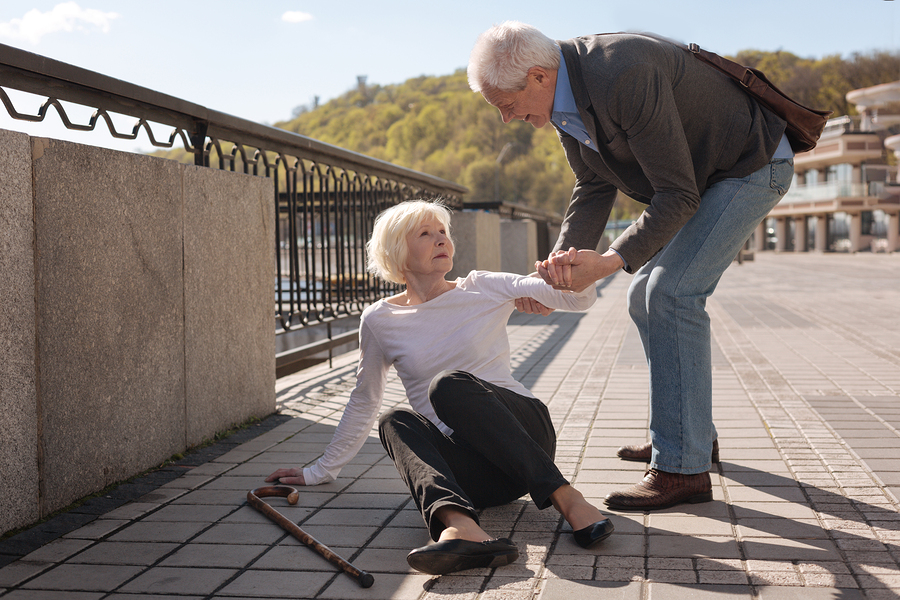In the golden years of life, independence and safety are paramount. For many seniors, maintaining autonomy is a cherished goal. However, one of the significant challenges that threaten this independence is the risk of falls. Understanding why fall detection matters for seniors is crucial for families, caregivers, and the seniors themselves.
Falls are not just a physical hazard; they can also impact the emotional and psychological well-being of seniors. With the advancement of technology, fall detection systems have emerged as a vital tool in ensuring the safety and health of our elderly population. This article delves into the reasons why these systems are essential and how they can make a difference in the lives of seniors.

Understanding the Risks of Falls in Seniors
Falls are a common concern among seniors, with statistics indicating that one in four people aged 65 and older experiences a fall each year. The consequences of these falls can range from minor injuries to severe complications such as fractures or head trauma. For more insights, check out this fall statistics article.
Physical Impact of Falls
The physical injuries sustained from falls can be severe, leading to long-term health issues. Seniors may suffer from broken bones, bruises, or even more severe injuries such as hip fractures. These injuries often require extensive medical treatment and rehabilitation, which can be both costly and time-consuming.
Psychological Effects of Falls
Beyond the physical injuries, falls can have a significant psychological impact on seniors. The fear of falling again can lead to a decrease in activity levels, increased dependency, and even social isolation. This fear can severely affect the quality of life and mental health of seniors. Learn more about prevention basics here.
The Role of Fall Detection Systems
Given the substantial risks associated with falls, fall detection systems have become an indispensable part of senior care. These systems use advanced technology to detect falls and immediately alert caregivers or emergency services, ensuring prompt assistance.
How Fall Detection Technology Works
Fall detection systems are typically integrated into wearable devices like smartwatches or pendants. These devices use sensors to monitor the wearers movements and recognize the sudden changes in motion that indicate a fall. Upon detecting a fall, the system sends an alert to a pre-set contact or emergency number.
Benefits of Fall Detection Systems
The primary benefit of fall detection systems is the swift response they facilitate. By alerting caregivers or emergency services immediately, these systems can significantly reduce the time it takes to provide help, potentially minimizing the severity of injuries. Read more about fall detection for aging in place here.
Enhancing Independence with Fall Detection
For many seniors, the fear of falling can lead to a loss of independence. Fall detection systems offer peace of mind, allowing seniors to continue living independently while knowing that help is just a button press away.
Promoting Confidence and Activity
With the assurance that they are being monitored, seniors may feel more confident in engaging in physical activities and social interactions. This increased activity can improve their overall health and well-being.
Supporting Aging in Place
Many seniors prefer to age in place, staying in their homes rather than moving to assisted living facilities. Fall detection systems support this choice by providing a safety net that enables seniors to remain in familiar surroundings longer.
Choosing the Right Fall Detection System
Selecting the appropriate fall detection system involves considering several factors, such as ease of use, reliability, and additional features like GPS tracking. For a comprehensive guide, visit this medical alert systems page.
Features to Consider
When choosing a fall detection system, its essential to look for features that meet the specific needs of the senior. These may include waterproof designs, long battery life, and easy-to-use interfaces.
Considering the Cost
While fall detection systems are an investment, the cost of not having one can be much higher in terms of medical expenses and the emotional toll of a fall. Its crucial to weigh these considerations when making a decision.
Conclusion: Prioritizing Senior Safety
Understanding why fall detection matters for seniors is a vital step in prioritizing their safety and well-being. With technological advances, these systems provide a lifeline that ensures help is always within reach. By investing in fall detection, families can offer their loved ones the best possible chance to live a safe, independent, and fulfilling life. For more details on prevention, check this external link.

FAQ Section
1. What is a fall detection system?
A fall detection system is a technological solution that monitors an individual’s movements and detects falls, prompting an alert for assistance.
2. Why is fall detection important for seniors?
Fall detection is crucial for seniors as it ensures prompt assistance in case of a fall, reducing the risk of severe injuries and promoting independence.
3. How does fall detection technology work?
Fall detection technology typically uses sensors in wearable devices to detect sudden changes in motion, indicating a fall, and sends alerts to caregivers or emergency services.
This article contains affiliate links. We may earn a commission at no extra cost to you.

